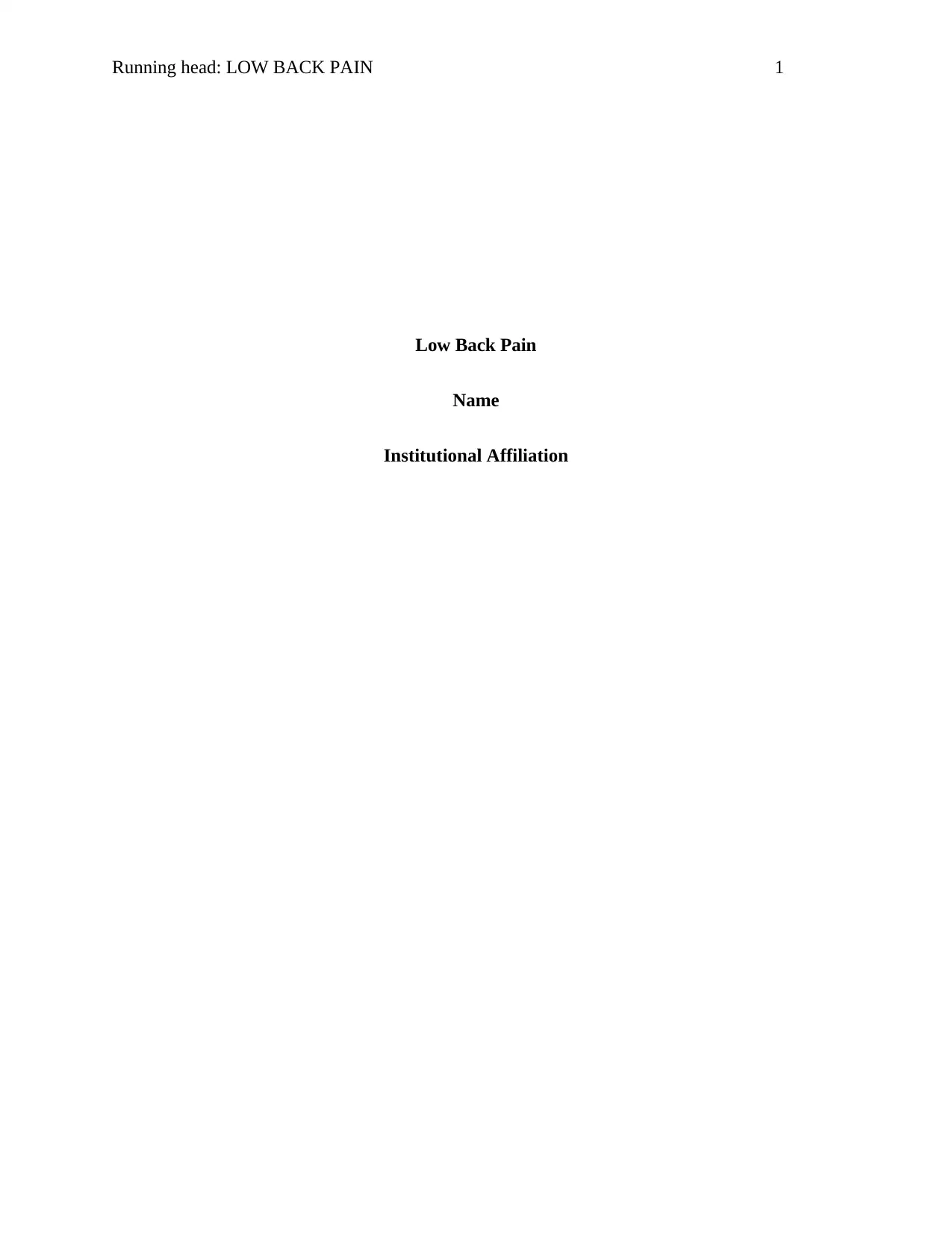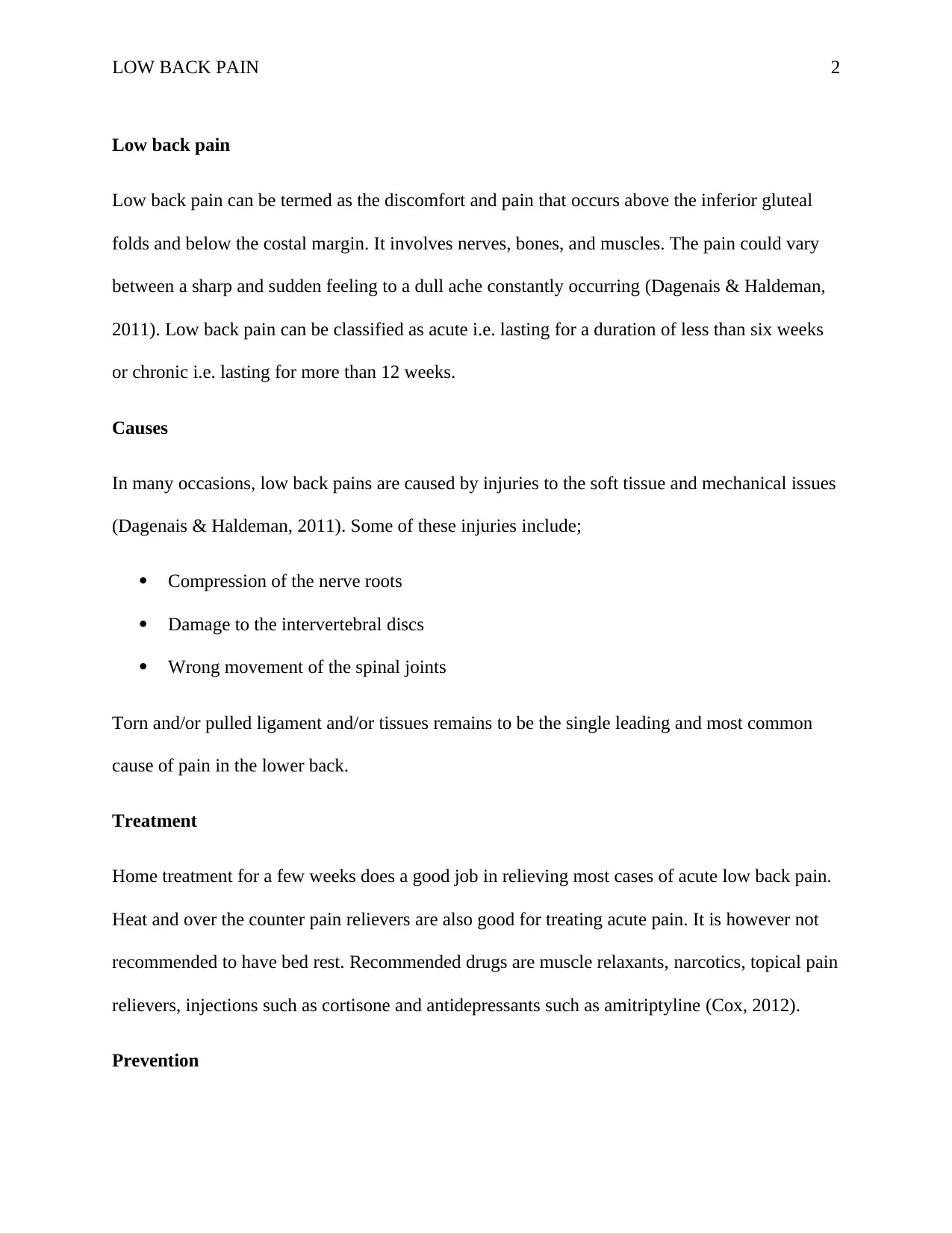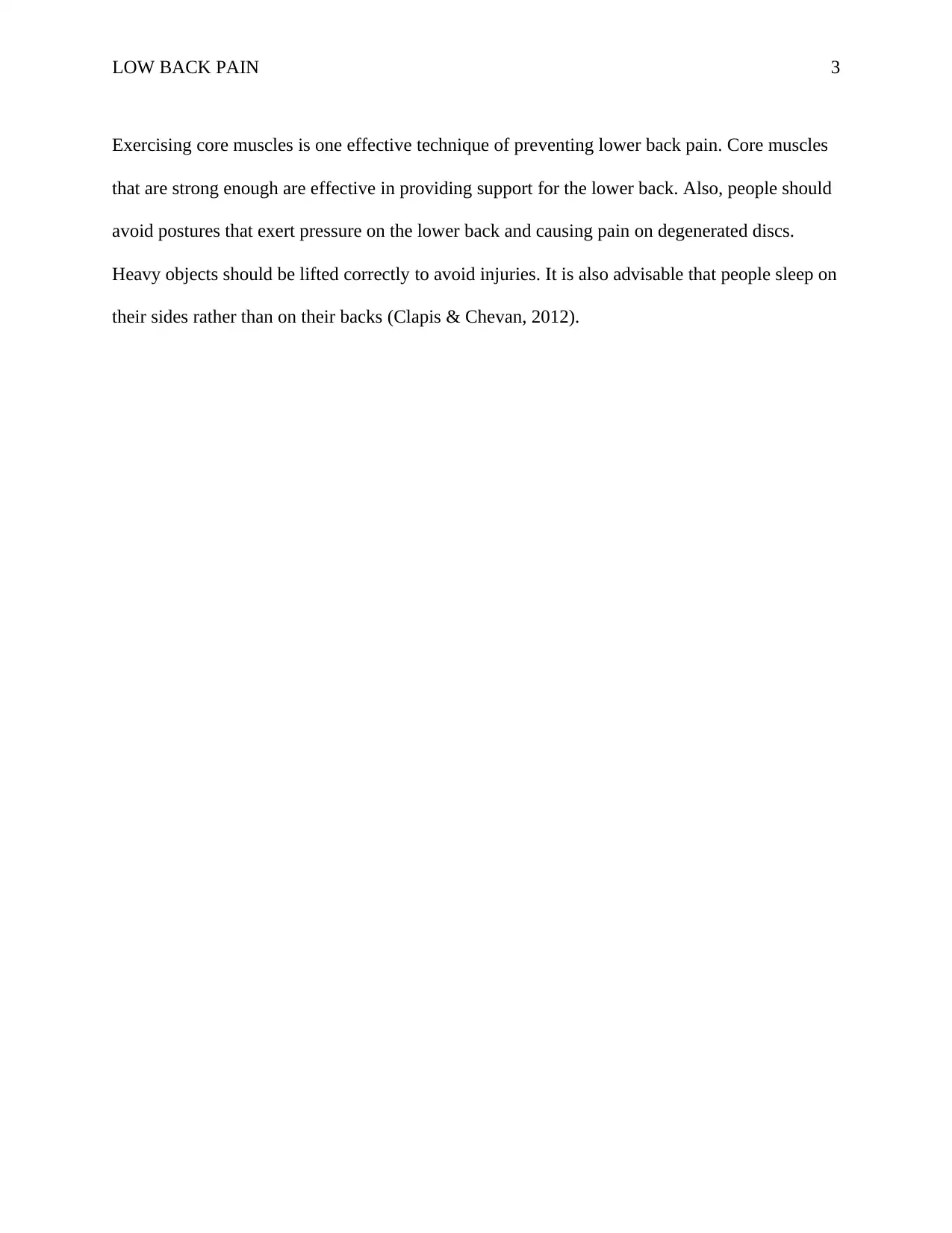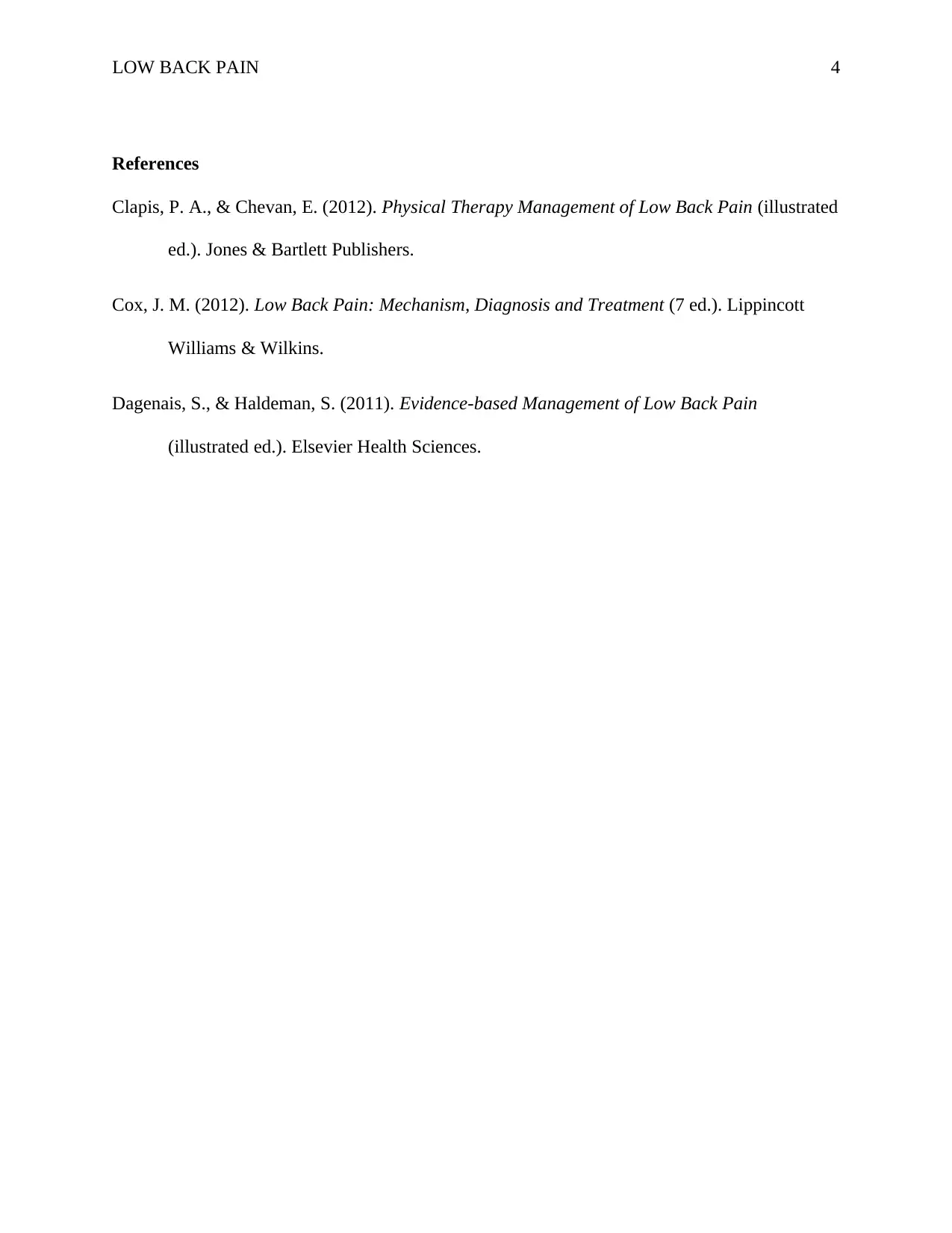Low Back Pain: Causes, Treatments, and Prevention Strategies Analysis
VerifiedAdded on 2021/09/15
|4
|420
|29
Report
AI Summary
This report examines low back pain, detailing its causes, treatments, and preventive measures. The report begins by defining low back pain and distinguishing between acute and chronic conditions. It then explores various causes, including soft tissue injuries, compression of nerve roots, and issues with the intervertebral discs and spinal joints. The report also reviews treatment options, such as home care, over-the-counter pain relievers, and the use of muscle relaxants and other medications. Furthermore, it emphasizes the importance of core muscle exercises and proper posture to prevent back pain. Finally, the report includes references to relevant literature on the subject, providing a comprehensive overview of low back pain management and prevention.
1 out of 4











![[object Object]](/_next/static/media/star-bottom.7253800d.svg)